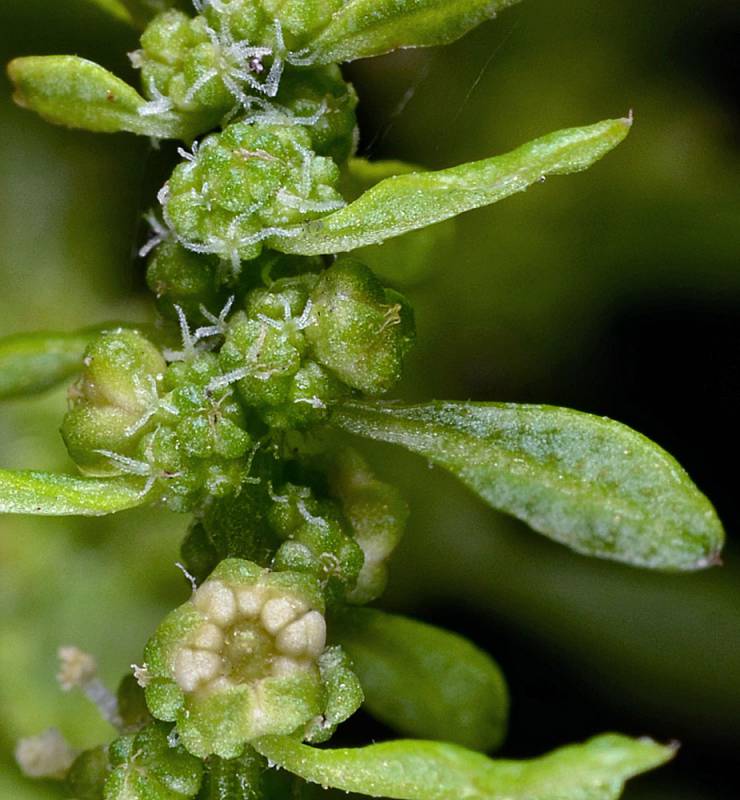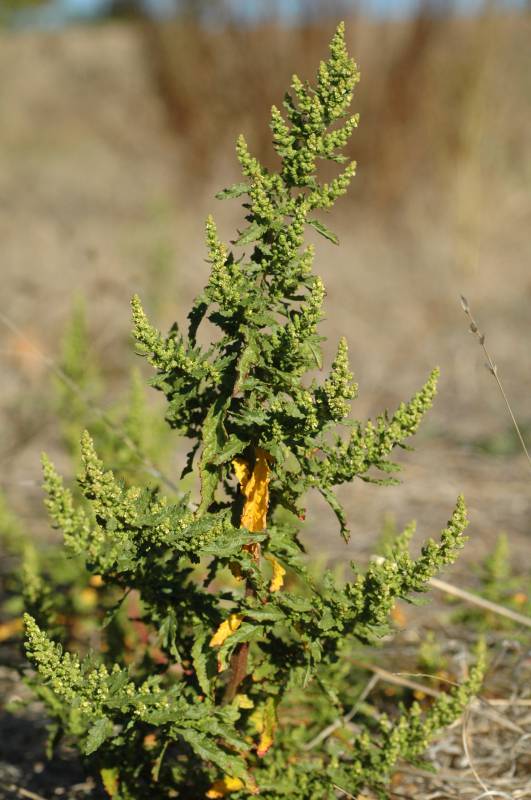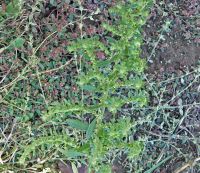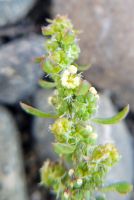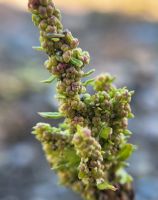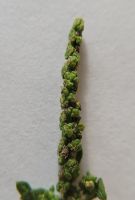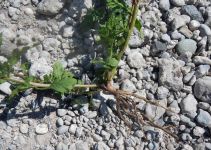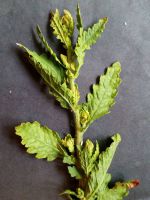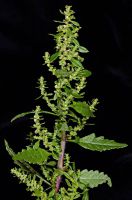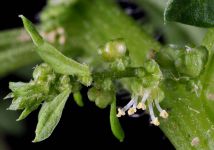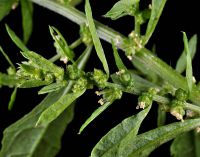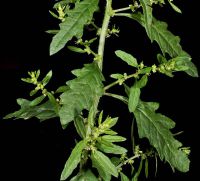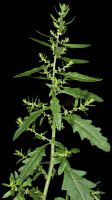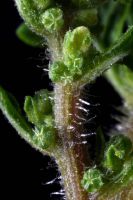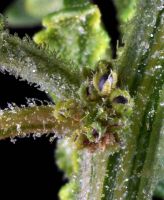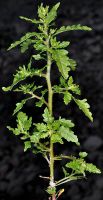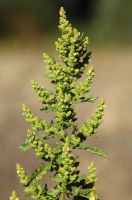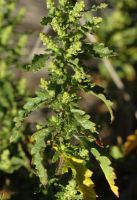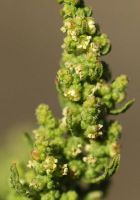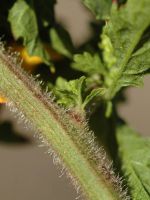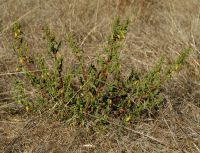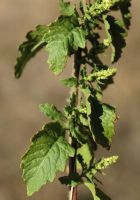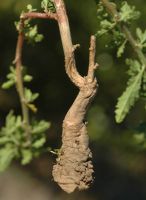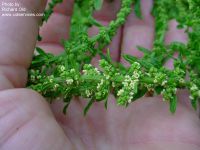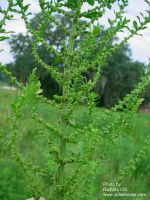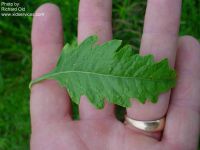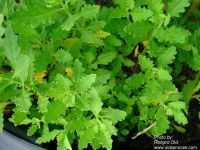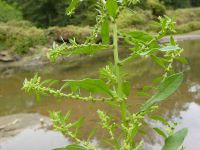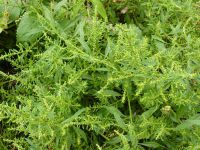Distribution: Occurring on both sides of the Cascades crest in Washington; Washington to California, east to the southern Rocky Mountains; native from the Great Plains to the Atlantic Coast.
Habitat: Roadsides and waste areas, riparian zones, tolerant of alkaline.
Flowers: July-November
Origin: Introduced from southern North America and tropical America
Growth Duration: Annual
Conservation Status: Not of concern
Pollination: Wind
Glandular and strongly aromatic annual or short-lived perennial, simple to freely-branched, erect, up to 1 m. tall, covered with sessile yellow glands and often pubescent.
Leaves alternate, the blades rhombic-ovate to lanceolate, up to 10 cm. long, strongly wavy-pinnatifid to wavy-dentate, narrowed to short, slender petioles, gradually reduced and often entire and bract-like above.
Flowers sessile and glomerate in small spikes borne in panicles in the leaf axils; perianth glabrous, 5-lobed over half the length; stamens 5, opposite the perianth lobes; styles 2.
Seed 1, lenticular, horizontal, 0.8 mm. in diameter.
Publication: Ukrayins’k. Bot. Zhurn., n. s. 59: 382. 2002.
Teloxys ambrosioides (L.) W.A. Weber
PNW Herbaria: Specimen records of Dysphania ambrosioides in the Consortium of Pacific Northwest Herbaria database
WA Flora Checklist: Dysphania ambrosioides checklist entry
OregonFlora: Dysphania ambrosioides information
E-Flora BC: Dysphania ambrosioides atlas page
CalPhotos: Dysphania ambrosioides photos

